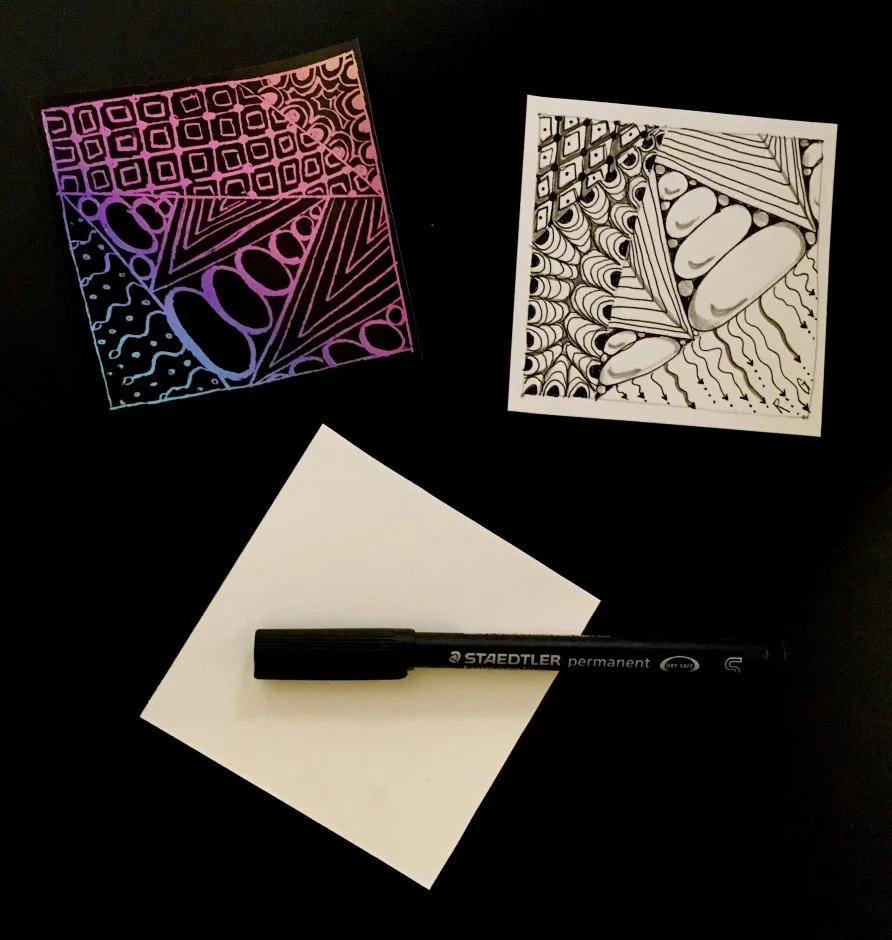November is a busy time of year. School and extra-curriculars are in full swing, and calendars rapidly begin filling up with social events and obligations as the holiday season approaches. During busy times we often talk about taking time to unplug or zone out in order to manage well. Have you ever tried what sounds like the complete opposite – intentionally taking time to zone in?
This idea of intentionally zoning in comes from the concept of mindfulness. Mindfulness originated in Buddhist philosophy thousands of years ago, and has since found its way into North American research, health sciences, and culture. Jon Kabat-Zinn, the founder of the mindfulness-based stress reduction program, describes mindfulness as paying attention in a systematic way for no reason other than to be awake. When we stop to pay attention to our thoughts, we find that our minds are often in the future (worrying about what might happen) or in the past (thinking about what has happened). Kabat-Zinn points out that the present moment is the only time we have to be creative and to be in relationships. Mindfulness is all about the here and now.
Bishop, Lau et al. (2004) explain that mindfulness has two components: first, you intentionally direct your attention to stay on immediate experience, which allows you to increase your awareness of what’s happening in your mind in the present moment. Second, you choose to view your experiences in the present moment with curiosity, openness, and acceptance (and not judgement).
Why take an accepting curious view of our thoughts in the present moment? Research has linked mindfulness practice to numerous mental, emotional, and physical health benefits. Studies have shown that mindfulness meditation can boost our immune systems, and that mindfulness increases positive emotions while decreasing stress and negative emotions. Mindfulness helps us to tune out distractions and to improve our memories and attention. It increases our compassion for others as well as our compassion for ourselves. These benefits all serve us well when we are going through busy seasons of life!
As art therapists, we do the majority of our work in the present moment. When a client attends an art therapy session, it’s all about what is happening in the here and now for 50 minutes. Art therapists are 100% zoned in to what is happening in the interaction, the art making process, and with the artwork itself. They approach each session with curiosity, openness, and acceptance. The goal is to facilitate a meaningful connection with clients by focusing on the shared experience happening in the present moment. Everything that happens in the session is significant and provides clues as to how the client experiences and interacts with his or her world. Art therapists ask questions or offer observations to help clients to bring awareness to their experiences of the art making process and the artwork that they create through that process. For example, the art therapist may invite the client to notice how the paint smells, or to reflect on how a different size of paintbrush makes different kinds of marks on the paper. Bringing attention to the physical process of making art allows clients to zone into their present moment. Different art materials may evoke different emotions or reactions. A certain art task may be experienced as frustrating, while the next one may feel relaxing. As clients bring their awareness to thoughts, emotions and processes in the here and now, they are often able to gain a new perspective and to make connections to experiences or relationships beyond the art therapy session.
While an art therapist can act as a guide or a facilitator for this process during an art therapy session, you can also intentionally practice mindfulness through art making on your own at home. Colouring books are a great example of this – some people find that when they are working on a colouring page they completely zone in to the process and experience a break from anxiety. Check out our blog post here for some more thoughts and reflections about colouring books:
Today we’re sharing another idea for an arts-based mindfulness practice. This art task is called a Zentangle. The information and instructions shared here are based on a workshop entitled “The Phenomenology of Zentangle and the Implications for Art Therapy” given by Deborah Kopeschny at the recent Canadian Art Therapy Association Conference (Toronto ON, October 2016). Kopeschny, an art therapist in training and a Certified Zentangle Teacher (CTZ), describes a Zentangle as a fun and meditational abstract art activity. She has conducted arts-based research to explore Zentangle as an art therapy technique. During her workshop she shared some basic instructions, paraphrased below, as a starting point to explore the world of Zentangle. The main idea is that a Zentangle is a simple doodling exercise that is meant to help its creator to bring attention to the present moment and to mindfully create a small piece of art within a short period of time. It’s meant to be a 15-minute exercise that allows you to zone in, take a break from the outside world, and express your creativity in a structured way while also practicing mindfulness. According to the official Zentangle website, creating Zentangles has helped some individuals to increase their concentration and attention span, to feel more relaxed, to quickly and simply access mindfulness, to increase self esteem, to manage anger, to develop creativity, and to relieve stress among many other benefits.
Want to give it a try? Here’s how to make a Zentangle:
- Gather your materials. Cut your paper into a 3.5 inch square, and grab a pen of your choice. Traditionally this would be a fine tip black pen. The materials are simple in order to make this an accessible and inexpensive art form, and the paper is small because the Zentangle is meant to be completed in one sitting and to not take too much time (approx. 15 mins).
- Begin by sitting firmly in your chair with your feet on the ground, and gently close your eyes. Take a deep breath in through your nose, and exhale. Notice how it feels to sit in your chair. Take a moment to check in with your physical body. When you feel ready, gently open your eyes and notice the art materials in front of you. Pick up your paper and feel the texture between your fingers. Notice how it looks, feels, and smells. Do the same with your drawing utensil – feel the weight of it in your hand. Remove the lid and make a squiggle on the back of your paper, so that you know how this drawing utensil works on this paper.
- When you are ready, turn your paper so that the blank side is facing up. Draw a border around the edge of the square.
- Divide your square into 4 sections by drawing a “z” diagonally across the square.
- Starting with any section that you like, fill each section with an abstract pattern. Here are a few ideas for patterns that you can try (disclaimer: these are based on official Zentangle patterns but are not exact).
- Grid – divide your section into a grid. At each intersection of lines, make a dot. Outline the inside of each square in the grid.
- Half moon – draw half moon shapes along the border of your section. Fill in each half moon. Trace the new shape inside the section. Keep tracing this shape until you fill the space.
- Bubbles – divide your section in half using a zig zag line. On one side of the zig zag, trace and repeat the line to fill the space. On the other side, draw ovals or bubbles that fill the triangle spaces, starting small and getting larger.
- Organic – draw squiggly lines of varying length. At the end of each squiggly line, add an arrow, dot, or organic shape. Try using a variety of different accent shapes at the ends of your lines.
- Add shading or embellishment if you want to add a sense of depth to your Zentangle.
- When you are finished with your design, add your initials somewhere within the border.
- Sign the back of your Zentangle and write the date.
That’s it! Now that you have the basics, you can experiment and get creative! Check out the Zentangles in the photo with this post – there’s an example of a traditional black and white Zentangle, as well as a variation using black scratch paper. Give yourself 15 minutes and try it! We would love to see what you come up with. Follow us on Facebook (Art as Therapy) or Instagram (@art_as_therapy) and share your creations using the hashtag #aatzentangle.
For more information about art therapy or to book a session today, call 1-519-307-9000 or email info@artastherapy.ca.
Written by Rubi Garyfalakis, Art Therapist at Art as Therapy
References:
Bishop, Lau et al. (2004). Mindfulness: A Proposed Operational Definition. http://www.personal.kent.edu/~dfresco/mindfulness/Bishop_et_al.pdf
Kopeschny, D. (2016). “The Phenomenology of Zentangle and the Implications for Art Therapy.” Workshop at CATA/OATA Conference, October 15, 2016.
“What is Mindfulness?” http://greatergood.berkeley.edu/topic/mindfulness/definition
Official Zentangle Website: https://www.zentangle.com/

